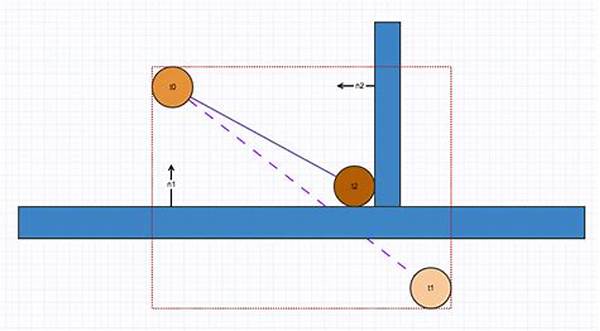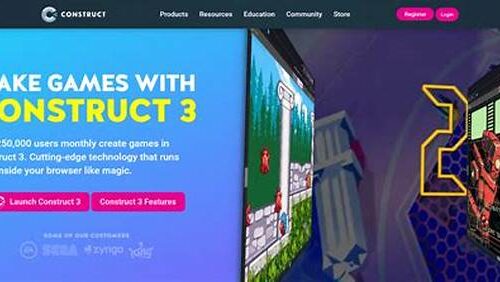Hey there, animation enthusiasts and tech geeks! Today, we’re diving into the fascinating world of collision detection in dynamic animations. Whether you’re a gamer wanting to understand why your character stops dead at a wall or a budding developer looking to make your animations more realistic, this topic is as exciting as it sounds. Think of it as the art of stopping things from awkwardly merging into each other. Fans of seamless animations, let’s explore what makes this element so essential!
Read Now : Parallel Algorithms For Physics Simulations
The Basics of Collision Detection
So, what exactly is collision detection in dynamic animations? Imagine you’re playing a game, and your character bumps into a treasure chest. The game needs to know when to make your character stop or interact with the object. Collision detection is the process that ensures different elements of an animation recognize and respond to one another. It’s like refereeing a theater act—only the actors are digital avatars and geometric shapes running around your screen! With technology progressing, methods of collision detection keep evolving, offering developers various sophisticated tools to build immersive experiences. By perfecting this element, animations become more interactive, creating a believable digital universe from video games to VR simulations.
Techniques in Collision Detection
Bounding Boxes and Spheres
Bounding boxes and spheres are fundamental in collision detection in dynamic animations. They’re easy on the processor and work wonders for simple object interactions, acting as invisible barriers.
Pixel-perfect Detection
For intricate details, there’s pixel-perfect detection. It’s like zooming in on each pixel to check for overlaps, bringing high accuracy in collision detection for dynamic animations.
Spatial Partitioning
Speed things up with spatial partitioning! This divides the virtual world into sections, reducing the number of collision checks and optimizing animation performance.
Sweep and Prune
The sweep and prune method organizes object movements along axes, making collision detection in dynamic animations faster by disregarding distant, non-intersecting items.
Continuous Collision Detection
Lastly, we have continuous collision detection, preventing fast-moving objects from sneaking through gaps, a must-have for fast-paced animations and games.
The Importance of Accurate Collision Detection
It’s more than just about stopping characters; collision detection in dynamic animations is crucial for realism. When objects interact naturally, users find themselves diving deeper into the experience. Imagine a soccer game where the ball passes through the player rather than bouncing off—quite the sight, isn’t it? With precise collision detection, developers craft feedback systems, physical reactions, and dynamic responses that resonate authenticity. As technology keeps changing, so do expectations for reality in virtual creations, making this a continual area for innovation.
Read Now : Techniques For Smoother Game Performance
Collision Detection Methods and Challenges
Collision detection in dynamic animations comes with its fair share of challenges. Different methods have varying pros and cons. Take bounding boxes—they’re simple, great for non-complex shapes, but not for intricate designs. Pixel-perfect detection offers precision but can be computationally demanding. As developers, balancing performance with accuracy becomes a tightrope walk. In big-game environments, detecting which objects are even close enough to collide needs a strategy. Hence, developers employ creative solutions to ensure seamless animations without taxes on computational resources.
Creating Immersive Experiences Through Collision Detection
For developers, understanding collision detection in dynamic animations unlocks endless creativity. Smooth transitions, believable character interactions, and realistic object behaviors stem from mastering these techniques. As players, though, most of us might not consciously notice the seamlessness of the experience; it’s in those smooth moments where tech becomes invisible and the narrative shines. Collaborating developers, graphic artists, and tech wizards all rely on efficient collision detection to bridge the virtual-physical gap across platforms and realities.
The Future of Collision Detection
The evolution of technology promises refined methods for collision detection in dynamic animations. As virtual and augmented reality grow, ensuring a seamless interaction between objects becomes more vital. The future may see AI-driven detection methods that intelligently adapt and optimize, offering unprecedented realism. Aspiring animators and devs, grasping these basics now could be a game-changer in riding the waves of future innovations in animation technology.
Wrapping it Up
In a nutshell, collision detection in dynamic animations serves as the backbone of creating captivating and realistic digital interactions. Whether crafting blockbusters or casual apps, getting collision detection right means bridging art and tech seamlessly. So, next time you’re playing a game or watching an animation, take a moment to appreciate the invisible hand behind those seamless interactions. They may not be what you’re directly looking at, but they’re definitely what makes everything else pop!





